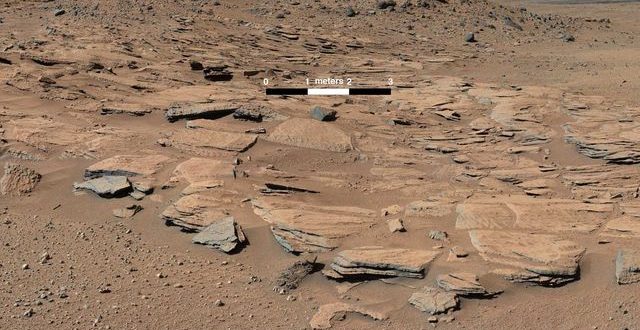Researchers from The Open University (OU) have discovered a process that could explain the long-debated mystery of how land features on Mars are formed in the absence of significant amounts of water.
Experiments carried out in the OU Mars Simulation Chamber – specialised equipment, which is able to simulate the atmospheric conditions on Mars – reveal that Mars’ thin atmosphere (about 7 mbar – compared to 1,000 mbar on Earth) combined with periods of relatively warm surface temperatures causes water flowing on the surface to violently boil. This process can then move large amounts of sand and other sediment, which effectively ‘levitates’ on the boiling water.
This means that, in comparison to Planet Earth, relatively small amounts of liquid water moving across Mars’ surface could form the large dune flows, gullies and other features, which characterise the Red Planet.
Dr Jan Raack, Marie Skłodowska-Curie Research Fellow at The Open University, is lead author of the research; he said:
“Whilst planetary scientists already know that the surface of Mars has ‘mass-wasting’ features – such as dune flows, gullies, and recurring slope lineae – which occur as a result of sediment transportation down a slope, the debate about what is forming them continues.
“Our research has discovered that this levitation effect caused by boiling water under low pressure enables the rapid transport of sand and sediment across the surface. This is a new geological phenomenon, which doesn’t happen on Earth, and could be vital to understanding similar processes on other planetary surfaces.”
Agencies/Canadajournal
 Canada Journal – News of the World Articles and videos to bring you the biggest Canadian news stories from across the country every day
Canada Journal – News of the World Articles and videos to bring you the biggest Canadian news stories from across the country every day



